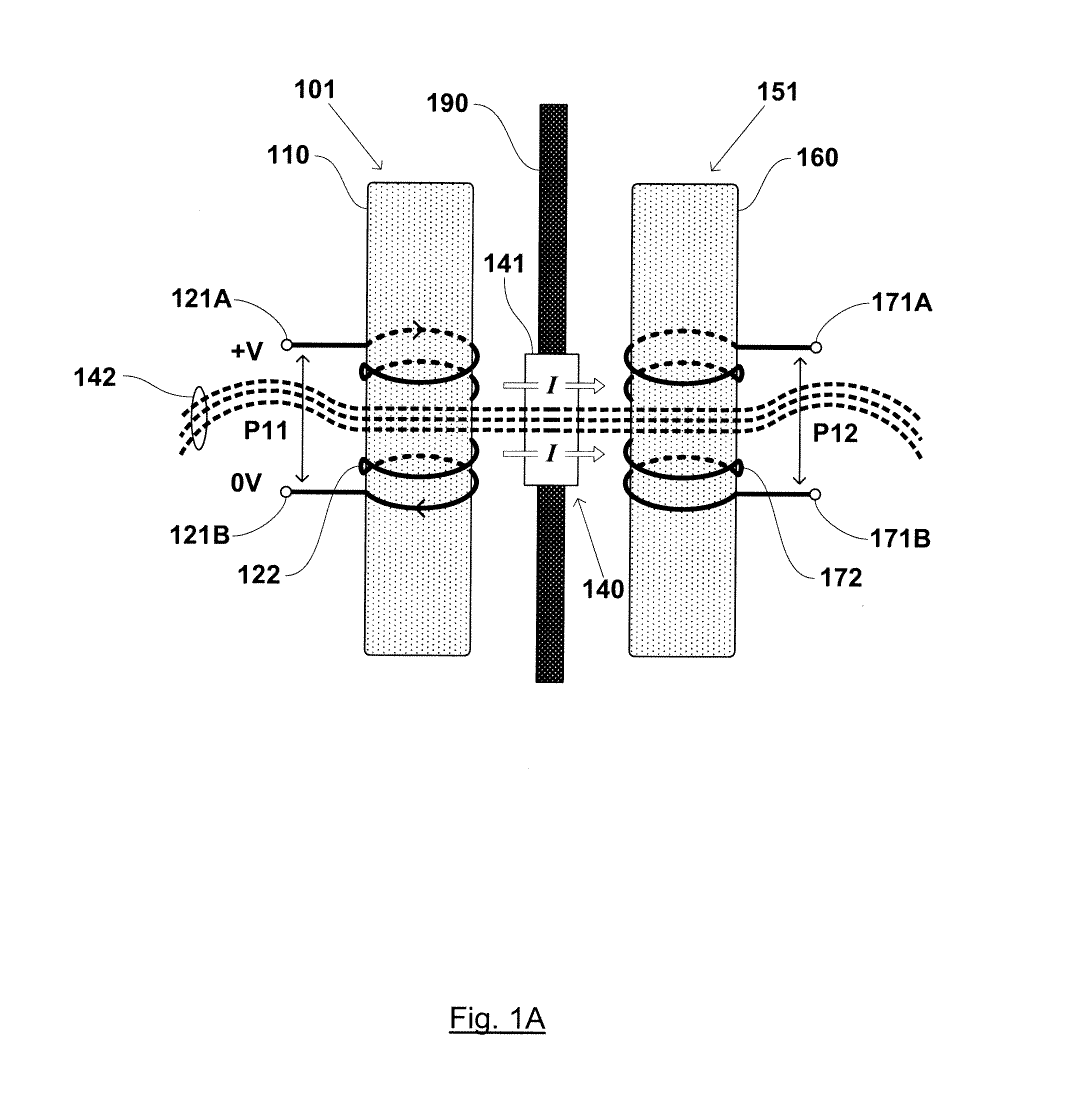System for wireless communications through sea vessel hull
a wireless communication and sea vessel technology, applied in the direction of near-field transmission, transmission, electric devices, etc., can solve the problems of limiting the available bandwidth, unable to control the signal path, and affecting the operation of the vessel, so as to achieve high data rate, high bandwidth communication, and high data rate
- Summary
- Abstract
- Description
- Claims
- Application Information
AI Technical Summary
Benefits of technology
Problems solved by technology
Method used
Image
Examples
first embodiment
[0043]FIG. 1A shows a side view drawing of a system for wireless communications through a sea vessel hull 190 according to the present invention. The generic term communications here and elsewhere implicitly refers to any or all of: transmission and / or reception of communications signals, transmission and / or reception of control signals and transmission and / or reception of data.
[0044]The system of FIG. 1A comprises a first transducer 101 comprising a first transducer coil 122 formed over a magnetic permeable toroidal core 110. First transducer coil 122 is wound of electrically conductive wire having an electrically insulating outer coating. First transducer coil 122 comprises input terminals 121A, 121B across which a voltage differential V may be applied. First transducer 101 is located so that the plane of toroidal core 110 is parallel to the plane of sea vessel hull 190. During use, one side of toroidal core 101 is positioned so that it is close to or flush against sea vessel hull...
second embodiment
[0057]FIG. 2A shows a side view drawing of a system for wireless communications through a sea vessel hull the present invention.
[0058]The system of FIG. 2A comprises a first transducer 201. First transducer 201 comprises a first transducer coil 222 formed of electrically conductive wire and having an electrically insulating outer coating. Coil 222 is wound over a portion of magnetic permeable annular core 210.
[0059]Annular core 210 has a first side S1 and a second side S2, both sides S1, S2 being perpendicular to a central axis of annular core 210. First side S1 faces away from sea vessel hull 290, and second side S2 faces towards sea vessel hull 290. Annular core 210 comprises three sections: an inner annular portion 215, an outer annular portion 217 and a flange portion 216. Flange portion 216 bridges between inner annular portion 215 and outer annular portion 217 at the first side S1 of annular core 210.
[0060]Annular core 260, similarly, has a first side and a second side (not s...
third embodiment
[0067]FIG. 3 shows a front view drawing of first transducer 301 for use in a system for wireless communications through a sea vessel hull according to the present invention.
[0068]Annular core 310 of FIG. 3 comprises three portions: an inner annular portion 315, an outer annular portion 317 and a flange portion (not shown) which bridges between inner annular portion 315 and outer annular portion 317.
[0069]Annular core 310 further can be divided into a pair of substantially equal sub-sections: first section 312 and second section 314. First section 312 and second section 314 may be secured together by a fixing bolt (not shown).
[0070]Transducer coil 322 is wound around inner annular portion 315 of annular core 310. Transducer coil 322 is formed of electrically conductive wire having an electrically insulating outer coating. Transducer coil 322 comprises input terminals 321A, 321B across which a voltage differential V may be applied.
[0071]Transducer coil 322 further comprises a first pl...
PUM
 Login to View More
Login to View More Abstract
Description
Claims
Application Information
 Login to View More
Login to View More - R&D
- Intellectual Property
- Life Sciences
- Materials
- Tech Scout
- Unparalleled Data Quality
- Higher Quality Content
- 60% Fewer Hallucinations
Browse by: Latest US Patents, China's latest patents, Technical Efficacy Thesaurus, Application Domain, Technology Topic, Popular Technical Reports.
© 2025 PatSnap. All rights reserved.Legal|Privacy policy|Modern Slavery Act Transparency Statement|Sitemap|About US| Contact US: help@patsnap.com



